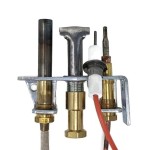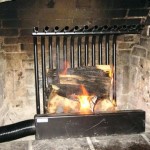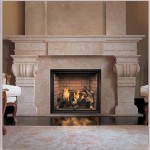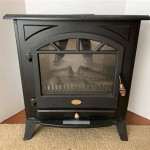Building A Concrete Fireplace Hearth: A Comprehensive Guide
A fireplace hearth serves as an essential safety component and a focal point in a living space. It protects the surrounding floor from sparks and embers while adding aesthetic value to the fireplace design. While various materials can be used for hearth construction, concrete offers durability, versatility, and a modern aesthetic. This article provides a detailed guide on building a concrete fireplace hearth, covering planning, preparation, construction, and finishing touches.
Planning and Design Considerations
Before commencing the construction process, meticulous planning is critical to ensure a successful outcome. Several factors must be considered during the planning phase, including size, shape, thickness, and style.
Size and Shape: The dimensions of the hearth must be adequate enough to provide ample protection from potential fire hazards. Building codes typically specify minimum hearth dimensions, extending beyond the fireplace opening. These regulations vary by location, therefore it is imperative to consult local building codes before planning. The shape of the hearth is largely a matter of personal preference and should complement the overall aesthetic of the fireplace and the room. Common shapes include rectangular, square, semi-circular, and custom designs.
Thickness: The thickness of the concrete hearth is crucial for its structural integrity and fire resistance. A minimum thickness of 4 inches is generally recommended for a standard fireplace hearth. However, thicker hearths are advisable for larger fireplaces or those that burn wood frequently. The increased thickness provides better insulation and prevents heat transfer to the underlying floor.
Style and Finish: Concrete offers numerous stylistic options for fireplace hearths. It can be stained, polished, stamped, or textured to achieve a wide range of looks. Polished concrete provides a sleek, contemporary appearance, while stamped concrete can mimic the look of natural stone. Staining allows for customized color palettes that coordinate with the room's decor. Consider the overall aesthetic of the fireplace and room when selecting the style and finish of the concrete hearth.
Weight Considerations: Concrete is a heavy material, so it's essential to assess the floor's structural capacity to support the weight of the hearth. If the floor is not strong enough, reinforcement may be necessary to prevent structural damage. Consult with a structural engineer to determine the load-bearing capacity of the floor and to recommend appropriate reinforcement measures if needed.
Materials and Tools Required
The following materials and tools are essential for building a concrete fireplace hearth:
Concrete Mix: A high-quality concrete mix is crucial for achieving a durable and long-lasting hearth. A standard concrete mix consisting of cement, sand, and aggregate is suitable for most fireplace hearth applications. Premixed concrete is a convenient option, ensuring a consistent mixture ratio. Consider using a fiber-reinforced concrete mix to enhance the hearth's strength and crack resistance.
Formwork Materials: Formwork is necessary to contain the wet concrete and shape the hearth. Plywood, lumber, or melamine boards can be used for constructing the formwork. The formwork must be sturdy and watertight to prevent leakage and maintain the desired shape of the hearth. Use screws and nails to securely assemble the formwork.
Reinforcement: Reinforcement is essential to enhance the structural integrity of the concrete hearth and prevent cracking. Rebar or wire mesh can be used for reinforcement. The reinforcement should be placed within the concrete slab to provide tensile strength and distribute stress evenly. Ensure that the reinforcement is properly sized and spaced according to engineering guidelines.
Tools: The following tools are necessary for building a concrete fireplace hearth:
- Measuring tape
- Level
- Square
- Circular saw or hand saw
- Drill with screw gun attachment
- Concrete mixer (optional)
- Wheelbarrow
- Shovel
- Trowel
- Bull float or darby
- Edger
- Groover
- Concrete vibrator (optional)
- Safety glasses
- Gloves
- Dust mask
Construction Process: Step-by-Step Guide
The construction process involves several sequential steps to ensure a solid and aesthetically pleasing hearth.
Formwork Construction: Construct the formwork according to the planned dimensions and shape of the hearth. Cut the formwork materials to the required sizes and assemble them using screws and nails. Ensure that the formwork is level and square. Seal the joints and seams with caulk to prevent leakage of concrete. Attach the formwork securely to the floor or existing fireplace structure using suitable fasteners.
Reinforcement Installation: Place the rebar or wire mesh reinforcement within the formwork. The reinforcement should be positioned at least one inch from the edges of the formwork. Secure the reinforcement in place using wire ties or plastic chairs. Ensure that the reinforcement is properly spaced and overlapped according to engineering guidelines. The reinforcement should be clean and free of rust or debris.
Concrete Mixing and Pouring: Mix the concrete according to the manufacturer's instructions. If using a concrete mixer, add water gradually to achieve the desired consistency. The concrete should be workable but not too soupy. If mixing concrete by hand, use a shovel to thoroughly combine the ingredients in a wheelbarrow or mixing trough. Pour the concrete into the formwork in even layers, starting from one end and working your way to the other. Avoid pouring large volumes of concrete in one spot, as this can cause uneven distribution and air pockets.
Consolidation and Leveling: Use a concrete vibrator (if available) to consolidate the concrete and remove air pockets. If a concrete vibrator is not available, use a shovel or rod to poke and agitate the concrete. Level the concrete surface using a bull float or darby. Work the tool back and forth across the surface to remove any high spots or low spots. Ensure that the surface is level and smooth.
Finishing: Allow the concrete to set for a few hours before proceeding with the finishing process. Use an edger to create rounded edges along the perimeter of the hearth. Use a groover to create decorative joints or control joints, which can help prevent cracking. The timing of the finishing process is crucial. If the concrete is too wet, it will be difficult to achieve a smooth finish. If the concrete is too dry, it will be difficult to work with.
Curing: Curing is essential for ensuring the strength and durability of the concrete hearth. Cover the concrete surface with plastic sheeting or wet burlap to prevent moisture loss. Keep the concrete moist for at least 7 days. This will allow the concrete to hydrate properly and reach its full strength. Avoid walking on the hearth during the curing process.
Formwork Removal: After the concrete has cured for at least 7 days, carefully remove the formwork. Use a pry bar or hammer to gently loosen the formwork from the concrete. Avoid damaging the concrete surface during formwork removal. Inspect the hearth for any defects or imperfections. Patch any cracks or voids with a concrete patching compound.
Finishing Touches and Sealing
Once the concrete hearth has fully cured, the final step is to apply a sealant to protect it from stains and moisture. Several types of concrete sealants are available, including penetrating sealants, topical sealants, and epoxy coatings.
Sealing: A penetrating sealant is recommended for fireplace hearths, as it penetrates the concrete pores and provides long-lasting protection without altering the appearance of the concrete. Apply the sealant according to the manufacturer's instructions. Typically, the sealant is applied with a brush, roller, or sprayer. Ensure that the sealant is evenly distributed and avoid creating puddles. Allow the sealant to dry completely before using the fireplace. Reapply the sealant periodically, as needed, to maintain its protective properties.
Optional Enhancements: Decorative aggregates can be added to the concrete mix for a unique aesthetic. These aggregates can be exposed by grinding and polishing the surface after curing. Concrete stains can be used to add color and depth to the hearth. The hearth can be polished to achieve a smooth, glossy finish. These enhancements can personalize the hearth and complement the overall design of the fireplace and room.

How To Build A Concrete Fireplace Hearth

Updating Fireplace Hearth No Demolition Required Single Girl S Diy

Gfrc Floating Concrete Hearth For Wood Fireplace 7 Steps With S Instructables

Concrete Fireplace Surrounds Hearths Mantels Network

How To Paint A Concrete Fireplace Hearth Look Like Stone Diy

Diy Diaries How To Create A Concrete Fireplace Hearth

Chapter 2 Installing The Hearth Solus Concrete Fireplace Surround

Diy Fireplace Hearth And Stacked Stone Wall Tile Newlywoodwards

Standard Size Concrete Fireplace Hearth Kobocrete

Concrete Fireplace Surrounds Hearths Mantels Network








